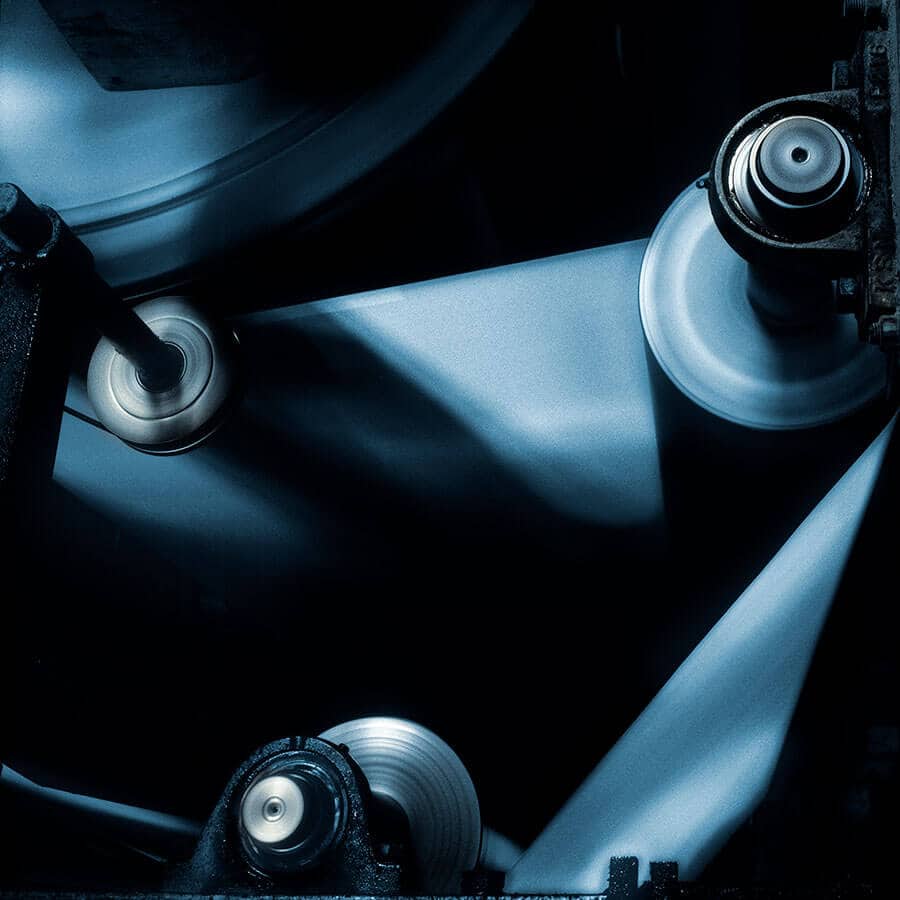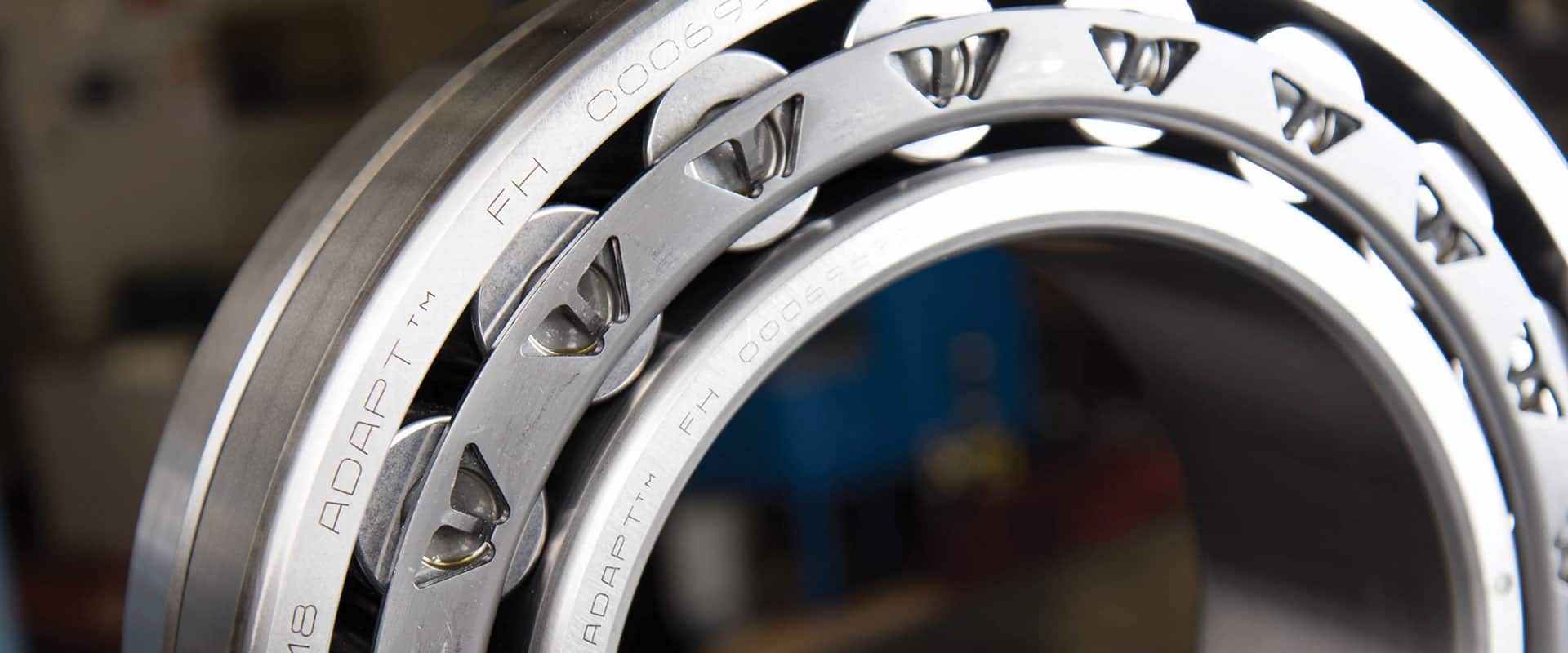Case Study
Staying Aligned in Tough Conditions
Paper OEMs adopt a new line of ADAPT™ bearings, originally designed for steel
Over the past decade, an innovative Timken bearing line has made waves in the global steel industry for its ability to lower the cost of operation in continuous casting lines. By combining the self-aligning capability of a spherical roller bearing with the axial freedom of a cylindrical bearing, Timken ADAPT has proven its ability to last up to three times longer than other leading brands.
With that success, ADAPT is gaining increased interest from another industrial sector: paper production. We spoke to two Timken experts about how ADAPT is helping customers overcome similar conditions in these two very different industries.

What do steel casting lines and paper dryer rolls have in common? Increasingly – Timken ADAPT bearings.
Q: How is the steel industry using ADAPT bearings?
Roth: ADAPT is used in continuous casting lines — the part of the plant where liquid steel gets turned into solid steel slabs. One large plant for a customer in Belgium has two casting lines, each of which uses hundreds of bearings in its continuous, 24/7 operation.
Those bearings undergo extreme thermal conditions, which cause the shafts they’re turning to expand and contract. They’re also subject to high loads at low rotational speeds, which can be hard on bearings.
As the liquid steel moves down the caster and becomes solid, it is sprayed with water to cool it down. All that equipment is constantly subjected to water, steam and scale, which makes corrosion another common issue.
After they’re cooled, the slabs go through a rolling mill where they become extremely thin steel sheets, for use in auto manufacturing or other purposes.

“As a service engineer, every day is a different story. Finding the right solutions for our customers’ challenges makes me proud and keeps the job interesting.”
Hubert Roth,
regional manager, service engineering Colmar, France

“It’s never a single person or even a single group working to solve a problem. Everyone who touches the customer plays a role in providing that Timken advantage.”
Tony Fierro,
product manager, spherical roller bearings Ohio, USA
Q: What challenges was the steel industry facing that ADAPT bearings helped solve?
Fierro: Within the caster operation, there’s a significant amount of misalignment that occurs because of the sheer weight of the steel and the thermal conditions, so we see a great deal of axial and radial movement. To accommodate that situation, a bearing in a fixed position is paired with a bearing on the opposite side of the shaft that’s intended to float — to move with the changing conditions.
Before ADAPT, some customers were using a toroidal bearing offered by a third party. At times they saw early failures with those bearings because of fretting or adhesion of the inner ring to the shaft, along with corrosion or other conditions. As the floating bearing became inhibited, it would lead to cross-loading and premature bearing damage.
Faulty assembly could also cause premature damage. With the toroidal solution, the customer was required to calculate during assembly how much they expected the bearing and the shaft to move as thermal conditions changed during operation. When those measurements weren’t done properly, the bearing would become skewed.
Q: Were customers seeing a lot of downtime as a result of bearing failure?
Roth: They devised workarounds, always keeping spare caster segments available and ready to install. It took about a half hour to pull out a segment and put a new one in, so production wouldn’t stop completely, but it added to production costs to disassemble, replace and review those segments.
Q: How did Timken ADAPT solve those problems?
Fierro: ADAPT combines a spherical roller bearing on the outer ring with a cylindrical roller bearing for the inner ring, so it can handle misalignment as well as axial displacement.
At the same time, our bearing offers much simpler installation, with no initial shaft expansion calculations required. To address axial displacement, we use a cylindrical inner ring with internal design features that maintain a three-point contact on the rolling element. That design mitigates skew and helps prevent skidding or smearing.
In addition, ADAPT bearings fit within the existing housing. Often, the customer doesn’t have to replumb or change lubrication lines to accommodate ADAPT, which makes installation even easier.
Q: What are the overall benefits that the steel industry has realized by moving to ADAPT?
Roth: First of all — greatly extended bearing life. One customer claimed that previous toroidal bearings typically failed after producing about 700,000 tons of steel.
We started installing ADAPT bearings in continuous casters in 2017, and by 2019, each of those lines had accumulated more than 2.5 million tons of produced steel. So, we’ve already multiplied bearing life by three in certain cases. Our target is to reach 4.5 million tons for a single bearing system in production, and we think that we’ll likely reach that.
Our customers are also happy that the bearing is so easy to install. There’s no need for any equipment modification — just remove the existing toroidal bearing and put Timken’s in. Our inner ring can also be removed from the bearing, which makes mounting even easier.
7%
Higher Load Rating
Lower Operating Temperatures
Less Running Torque
30%
Longer Service Life
Q: What are the implications of the ADAPT bearing line for the paper industry?
Roth: In paper production, you also see quick temperature changes, especially during startup, and bearings have to quickly accommodate those changes. It’s similar to a steel caster, in terms of having one bearing on the fixed side and an adaptor bearing on the float side, with high, changing loads and lots of humidity.
Fierro: After our success in steel, Timken application, design and service engineers looked for other markets that might benefit from the technology. We developed an ADAPT line for the paper industry and began testing it in the field. Our longest running test bearing for paper is nearing two years and operating exceptionally.
Internal and field tests confirm that during operation, as all of those transient conditions are occurring, ADAPT bearings operate up to 10% cooler than the competition, with up to 10% less torque. Those factors have a direct correlation to performance in paper dryer sections.
We launched ADAPT into the paper market with a host of part numbers and sizes and have seen recent wins at two large original equipment manufacturers with facilities in Europe, Brazil and China. We expect we’ll see Timken ADAPT outperform the competition in the paper market, just as it has with steel casters.
Find out how ADAPT bearings could improve your operational efficiency
Last Updated: 2021/08/19
Published: 2021/04/23
